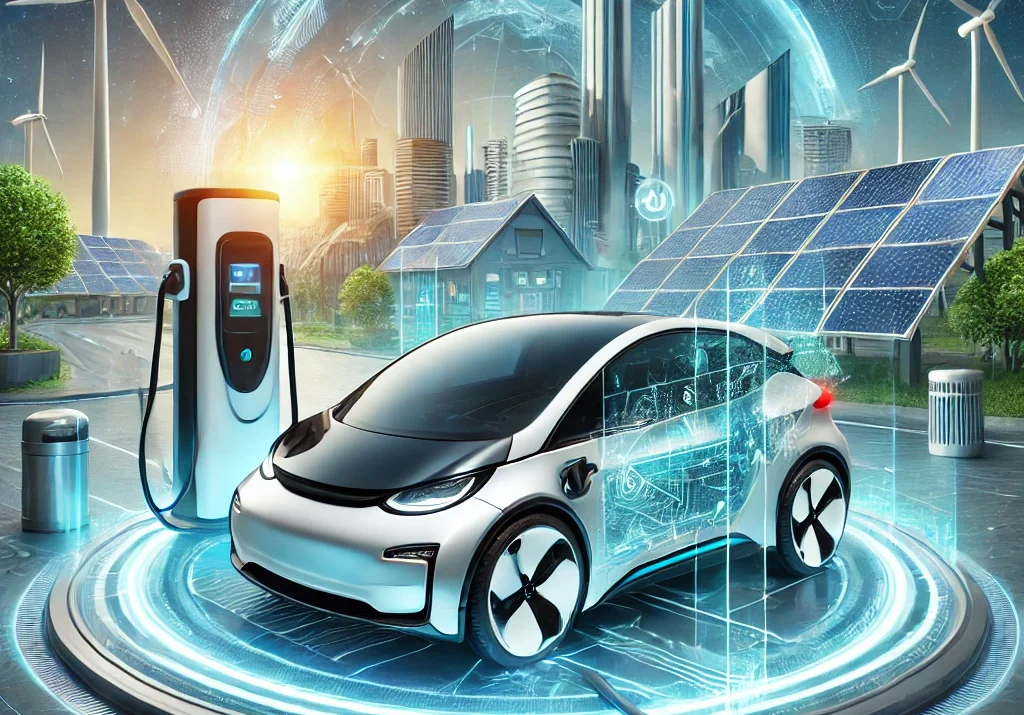Electric vehicles (EVs) are revolutionizing the automotive industry, offering a sustainable alternative to traditional gasoline-powered cars. By 2030, EVs are expected to dominate the market, driven by advancements in technology, government initiatives, and shifting consumer preferences. Here’s a detailed look at what to expect in the future of electric vehicles.
The Rise of Electric Vehicles by 2030
The transition to electric vehicles is accelerating, with major automakers and governments committing to an electric future. By 2030:
- Global EV Sales: Electric vehicles are projected to account for over 60% of new car sales globally.
- Carbon Emission Goals: Many nations, including the U.S. and the EU, aim to achieve net-zero emissions by 2050, positioning EVs as a cornerstone of sustainability efforts.
- Automaker Pledges: Companies like GM, Ford, and Volkswagen are investing billions into EV production, with plans to phase out gasoline cars entirely.
- Self-Driving Electric Cars Will Become More Common.
- According to Protocol, the ratio of electric cars to gas cars will gradually increase too:
- By 2025, electric vehicle sales could comprise up to 20% of new car sales
- By 2030, electric vehicle sales could reach 40% of new car sales
- By 2040, electric vehicle sales could account for nearly all new car sales

Advancements in Electric Vehicle Technology
Technological innovations are reshaping the EV landscape, making electric cars more efficient and accessible.
- Battery Technology
By 2030, solid-state batteries are expected to replace lithium-ion batteries, offering higher energy density, faster charging times, and longer life spans.- Example: Toyota is leading the charge in solid-state battery development, promising EVs with a range of 600 miles on a single charge.
- Charging Infrastructure
The global rollout of ultra-fast chargers will make charging as quick as refueling a gasoline car. Governments and private firms are collaborating to expand charging networks.- Example: The U.S. plans to install 500,000 public chargers by 2030.
- Vehicle-to-Grid (V2G) Integration
EVs will become part of the energy ecosystem, storing and supplying power to the grid during peak demands. This technology enhances energy efficiency and reduces costs for EV owners.
Global Adoption Trends
| Region | EV Adoption Trends |
|---|---|
| North America | EV adoption in the U.S. and Canada is rising, driven by government tax incentives and clean energy investments. California plans to ban new gasoline-powered cars by 2035. |
| Europe | Europe leads in EV adoption, with Norway achieving over 80% market share. Stringent EU emission regulations and subsidies continue to boost sales. |
| Asia | China dominates as the largest EV market globally. India focuses on affordable EVs and scaling up electrification efforts in its transportation sector. |
Car Manufacturers and Their EV Plans
| Manufacturer | Current Strategy | Future Plans |
|---|---|---|
| Volkswagen Group | Transitioning to EVs across brands like Audi and Porsche; investing in solid-state batteries. | 70% of European sales to be EVs by 2030; focus on solid-state battery development. |
| Tesla | Leading in EV innovation, Gigafactories, and autonomous driving. | Launching $25,000 affordable EV model; expanding global self-driving capabilities. |
| Toyota | Prioritizing hybrid vehicles; exploring hydrogen fuel cells. | Selling 3.5 million EVs annually by 2030; advancing solid-state battery technology. |
| BMW Group | Targeting luxury EVs through its i-series like the iX and i4. | 50% of global sales to be EVs by 2030; advancing premium battery technology. |
| Ford | Electrifying iconic models like Mustang Mach-E and F-150 Lightning. | Phasing out gasoline cars in Europe by 2035; expanding commercial EV offerings. |
| Hyundai and Kia | Leveraging shared E-GMP platform with models like Hyundai Ioniq 5 and Kia EV6. | Releasing over 20 EV models by 2030; focusing on hydrogen fuel cell technology. |
| General Motors (GM) | Accelerating EV portfolio under Ultium battery platform with models like Chevrolet Bolt and GMC Hummer EV. | Offering zero-emission vehicles exclusively by 2035; expanding autonomous vehicles. |
| Mercedes-Benz | Launching EQ series targeting premium customers with models like EQS and EQE. | Fully electric by 2030; rolling out next-generation battery technology and EV factories. |
| Nissan | Refining EV lineup with advanced battery technology, led by the Nissan Leaf. | Launching solid-state battery EVs by 2028; achieving carbon neutrality by 2050. |
Challenges Facing Electric Vehicles
Despite their promise, EVs face several challenges:
- High Initial Costs
While battery prices are declining, EVs are still more expensive upfront compared to traditional cars. By 2030, mass production and technological advancements are expected to close this gap. - Limited Charging Infrastructure in Rural Areas
Expanding charging networks to remote regions remains a challenge. Governments and private players are working to address this issue with targeted investments. - Battery Recycling and Environmental Impact
The environmental impact of mining raw materials like lithium and cobalt for batteries is significant. Recycling initiatives and alternative materials are being explored to mitigate these effects.

Benefits of Electric Vehicles
The growing popularity of EVs is driven by several advantages:
- 🚗 Reduced Emissions
EVs produce zero tailpipe emissions.
Significant contribution to combating air pollution and climate change. - 💰 Lower Operating Costs
Fewer moving parts = lower maintenance costs.
Cheaper energy consumption compared to traditional gasoline. - 🌱 Energy Independence
Reduces dependency on fossil fuels.
Encourages widespread adoption of renewable energy sources.
Competitors and Alternatives
While electric vehicles dominate the conversation, alternatives like hydrogen fuel cell vehicles and hybrid models also play a role. However, EVs have a clear edge due to their efficiency and growing infrastructure support
Sources:










